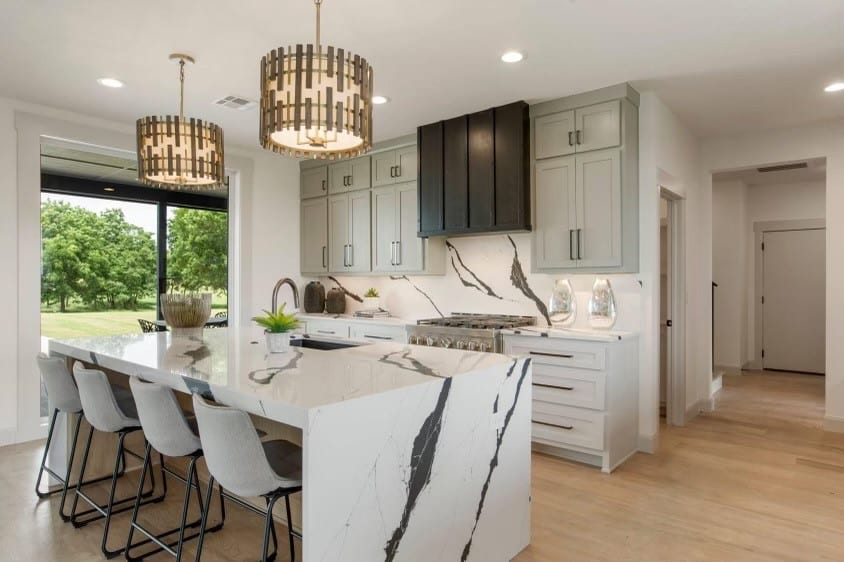Photo courtesy of Architectural Surfaces/MetroQuartz Unique Calacatta Black
Veined marble porcelains, especially those that emulate natural marble like Carrara, Calacatta or Statuario, are on the rise for applications such as kitchen islands and countertops.
Splashes of jewel tones, floral and other patterns inspired by nature, and exotic quartzite countertops are to name a few of the current trends in tile and stone that are driving today’s designs. Contemporary Stone & Tile Design asked several leading experts to share their observations on the latest influences and styles. Here is what they had to say.
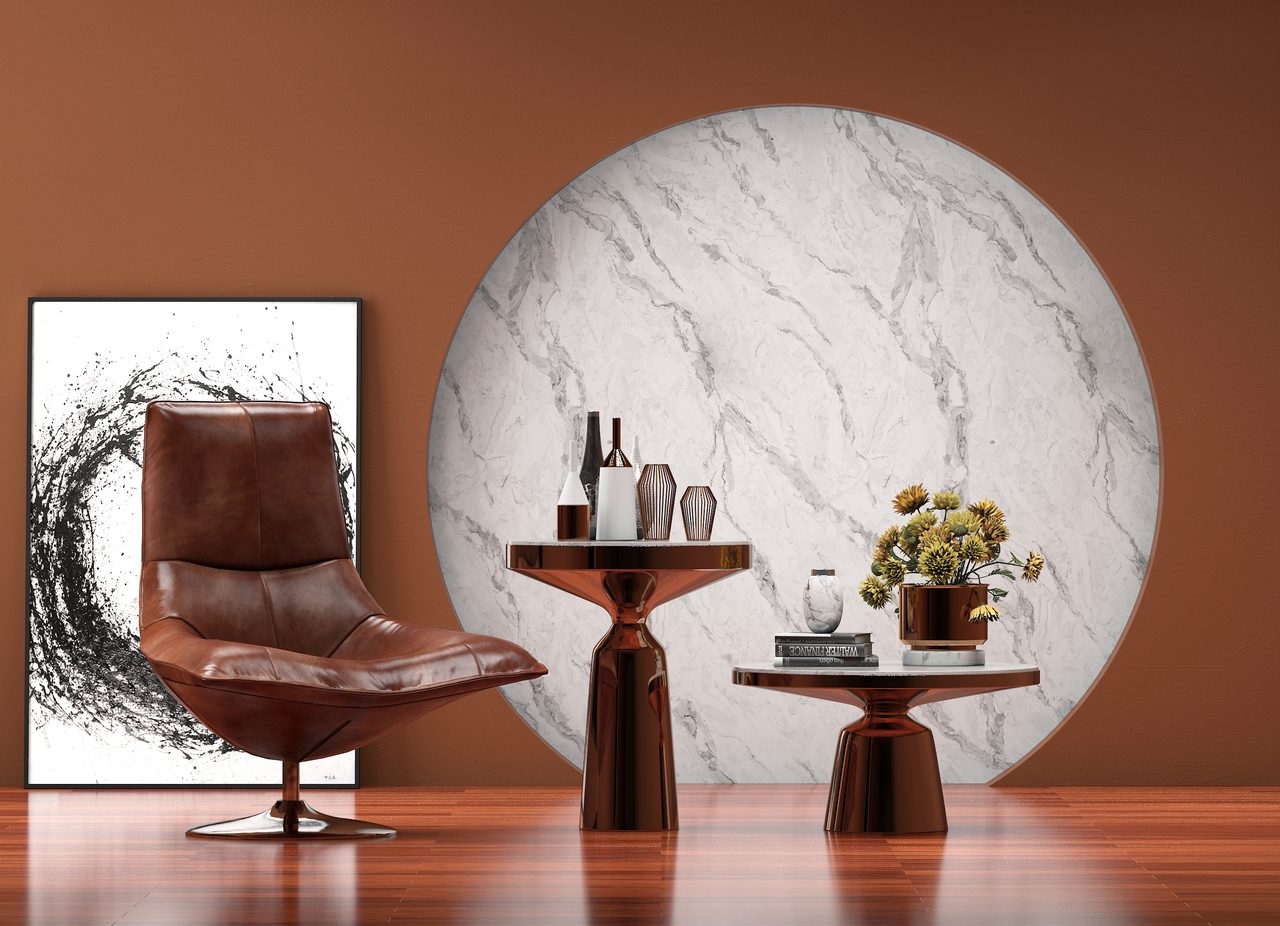
Photo courtesy of Architectural Surfaces/PentalQuartz-Amarcord
Unique wall accents are created with stone and tile.
CSTD: In terms of colors, patterns, textures and shapes of tile, what do you find people are currently gravitating towards for their home designs?
AS: While neutrals colors are still popular, the shift is to the warmer-toned neutrals. Nature-toned colors like greens and blues in small decorative tiles. Veined marble porcelains, especially those that emulate natural marble like Carrara, Calacatta, or Statuario, are seeing a surge. Textured and sculptural tiles for wall applications, looks that mimic natural stone mosaics, are still at the top.
CSTD: When it comes to tile size is bigger still better?
AS: The trend is still moving in that direction. Larger tile sizes can make a room feel spacious with the reduction of grout lines.
CSTD: Have these trends shifted at all compared to a few years ago? If so, what do you think are some reasons for this?
AS: Trend directions haven’t changed much in the past couple years. Colors are becoming more sought-after compared to white.
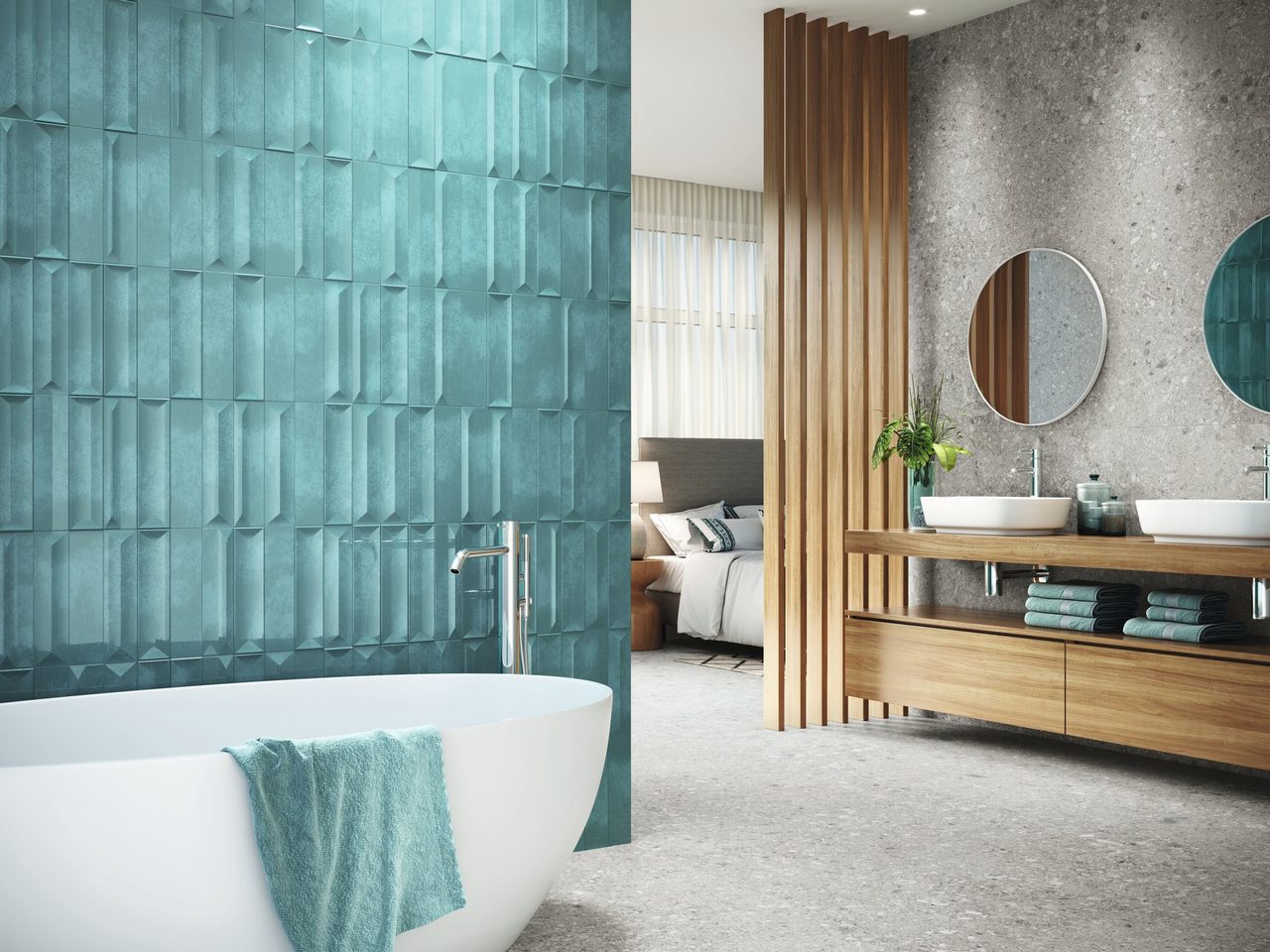
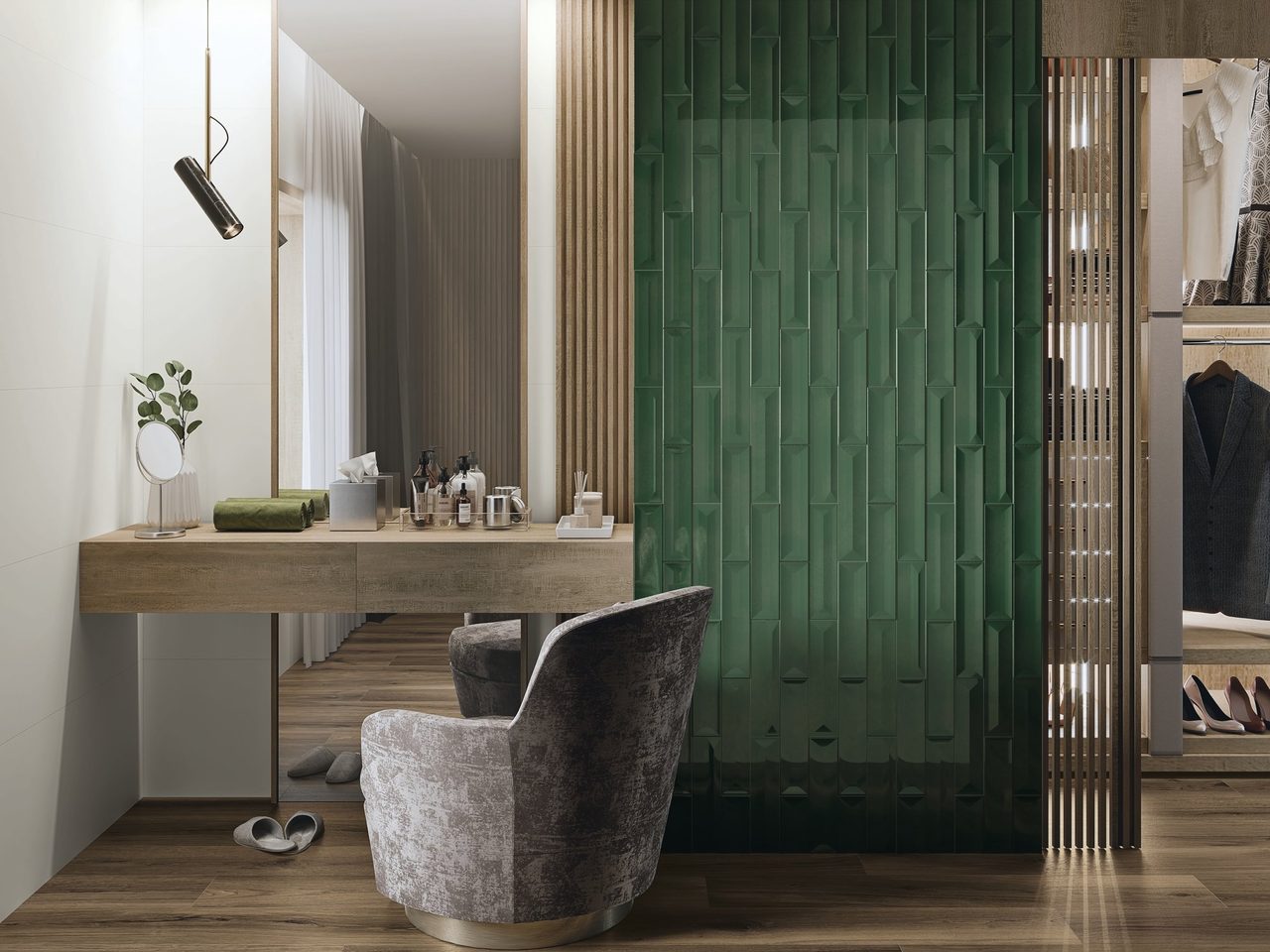
Photo courtesy of Architectural Surfaces/Reality
Nature-toned colors like greens and blues in small decorative tiles are currently a popular option for residential designs.
CSTD: Grays and beiges have been a popular choice for quite some time when it comes to stone countertops. Are you seeing any recent variation from these colors?
AS: While we see warm tones increasing in demand, the majority of the market is still demanding a lighter/white design aesthetic. We have also seen an increase in bold and vibrant colors in residential settings for countertop designs. Bold bathrooms, for example. People like a statement piece. We are also seeing statement pieces on a kitchen island, while the rest of the kitchen is a calmer color/design.
CSTD: What would you say are a few of the top stone choices for home design these days?
AS: Within the natural stones, we have seen a very large demand for quartzite. This is due to the beautiful rich aesthetic of this stone, along with its performance attributes. Quartzite has an enhanced/elegant look due to its composition versus granite. And it also performs really well. Typically, quartzites are harder than granite making it very durable for countertop use.
CSTD: For what applications do you find tile and stone being used the most?
AS: For natural stone and quartz slabs this still remains primarily residential and commercial countertop applications. With the introduction of larger-format porcelain slabs to the market, these are being used more for countertop applications. For tile, it is mostly flooring, kitchen backsplashes, bathrooms wall applications, showers and shower pans (floors). It is more of the complete bathroom package.
CSTD: It seems like tile applications are being used more now for outdoor applications than ever before. Why do you think this is?
AS: Most people have spent the past 18 months in their homes – working, living, cooking, etc. I think people have thought more about the spaces they live in and how the space functions for them, and there has been a focus on indoor to outdoor living spaces. It seems natural that tile was going to flow to outdoor uses for its versatility, durability and design tie-in with indoor designs.
Photo courtesy of Architectural Surfaces/Reality
Textured and sculptural tiles for wall applications are still at the top of design choices.
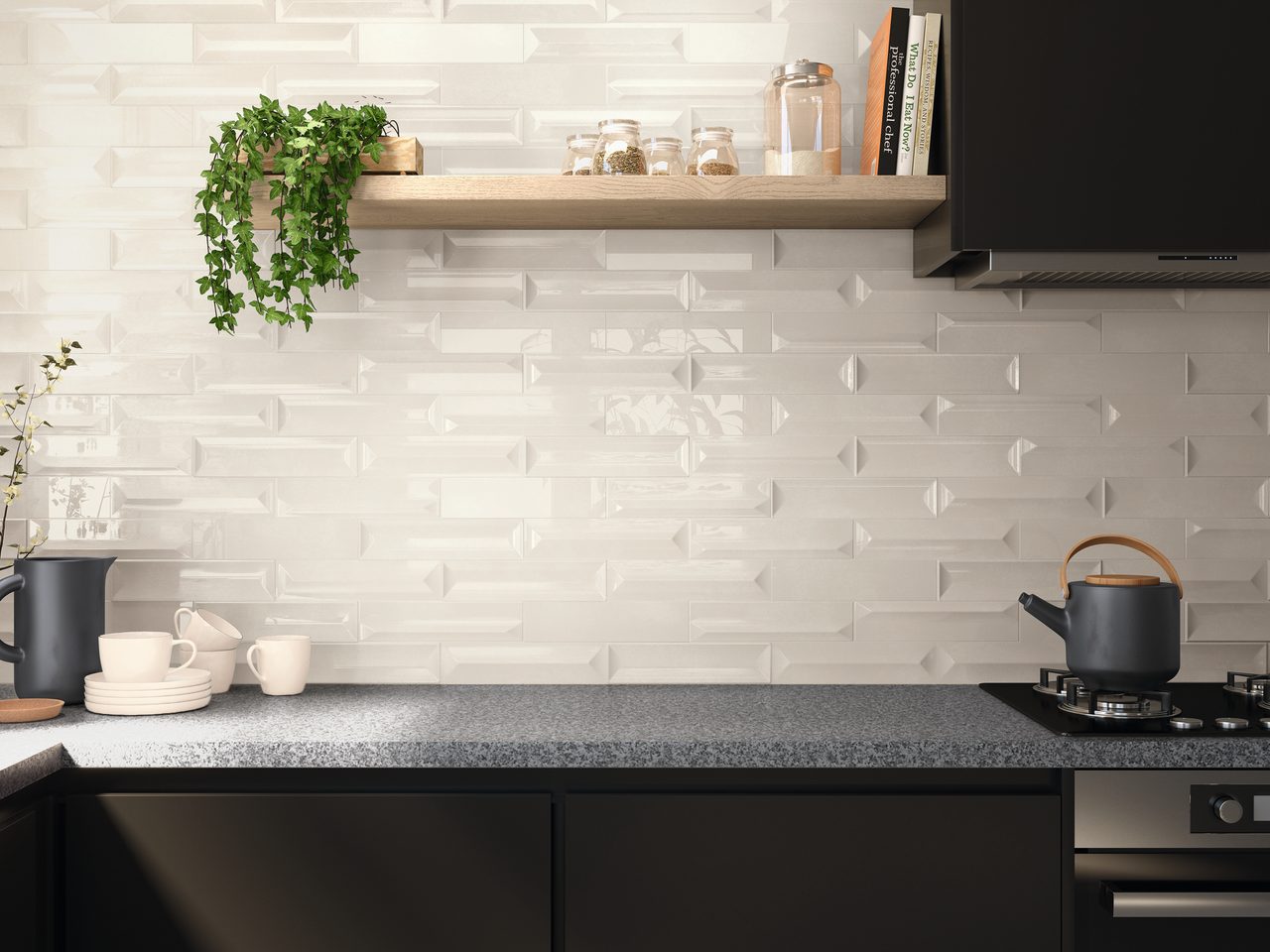
CSTD: Overall, what do you see on the horizon in regards to stone and tile trends in the near future?
AS: For tile, we are seeing patterned flooring, large hexagon shapes, terrazzo and aggregates. For stone, quartzite continues to gain in popularity. We think there will still be a predominantly white color palette, but with a slight turn toward warmer tones. Residential projects will continue to select vibrant colors for statement accents. People are tired of “sterile” looking all-white kitchens, and we have seen a shift with folks wanting more “excitement” from their countertop and tile selections.
A manufacturer’s perspective
Davide Saguatti, marketing director, Atlas Concorde USA
Photo courtesy of Atlas Concorde USA/Cove Collection
Geometric-shaped tiles for floor and wall patterns create a contemporary aesthetic.
CSTD: What type of tile aesthetic do you find people are currently gravitating towards for their home designs?
DS: After collectively spending much more time indoors and looking to our homes as a place of comfort, it makes sense that consumers are gravitating towards elements of biophilic design. Earthy tones, organic fabrics and furnishings derived of natural materials meet the need to create spaces that provide connectivity to nature. For example, fabric-, wood- and stone-look porcelain tiles in warm taupe and terracotta colors are surging in popularity.
Modern, geometric-shaped accents continue to be very popular as well. We are seeing consumers incorporate hexagons and triangles configured in eye-catching patterns for a contemporary twist on a classic design element.
CSTD: Have these trends shifted at all compared to a few years ago? If so, what do you think are some reasons for this?
DS: There has surely been a transition from an urban industrial aesthetic with robust rich colors and effects towards a look that is much more soothing and calming. After all, many of us are seeking a comforting sense of place, away from the uncertainty of our surroundings. Consumers are seeking looks that feel soft layered and cozy.
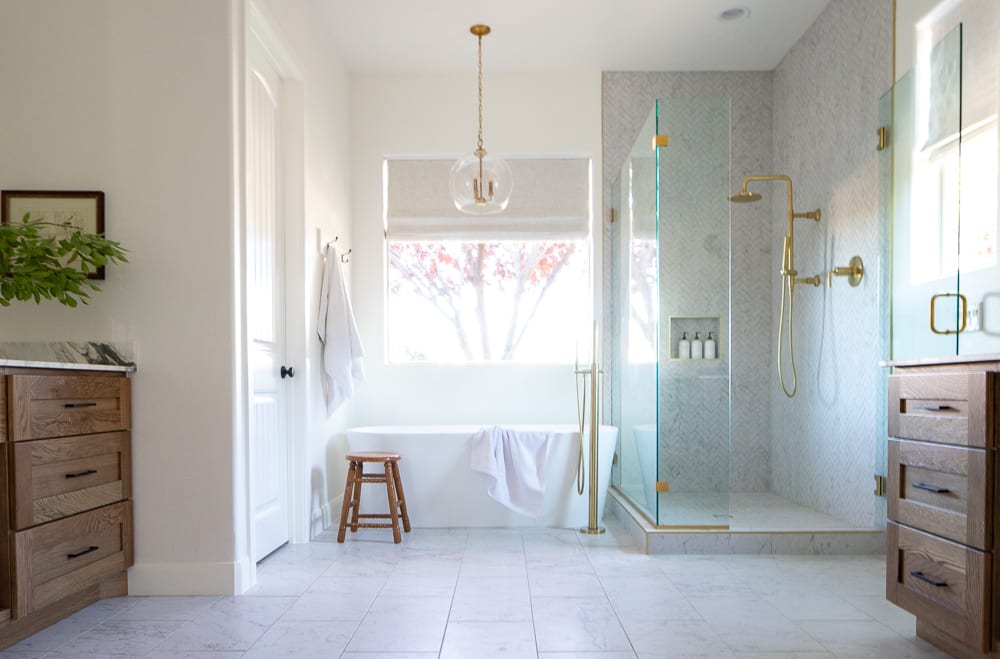
Photo courtesy of Atlas Concorde USA/Eon Carrara
Large-format floor tiles are still a popular choice for interior spaces, such as bathrooms.
CSTD: Are you finding that large-format tiles are still all the rage?
DS: Yes. Bigger is still better for most applications. For example, when installed across a bathroom shower, large-format tiles can give the surround a decadent built-in appearance as there are fewer grout lines in play (which also makes for less upkeep). Even a small room can benefit from an oversized 24- x 48-inch tile, as they can create the optical effect of continuity, making the space feel spacious and open.
CSTD: For what applications do you think tile lines are being used the most?
DS: The U.S. market is still fairly traditional using tile across moisture-prone applications such as bathrooms, showers, backsplashes, countertops, outdoor patios and pools.
A budding design trend is to use tile to create custom accent walls, both in residential (fireplaces, mudrooms and entryways) and commercial applications (hotel lobbies, reception desks).
Photo courtesy of Atlas Concorde USA/Haven
Wood-look porcelain tiles in warm taupe and terracotta colors are surging in popularity.
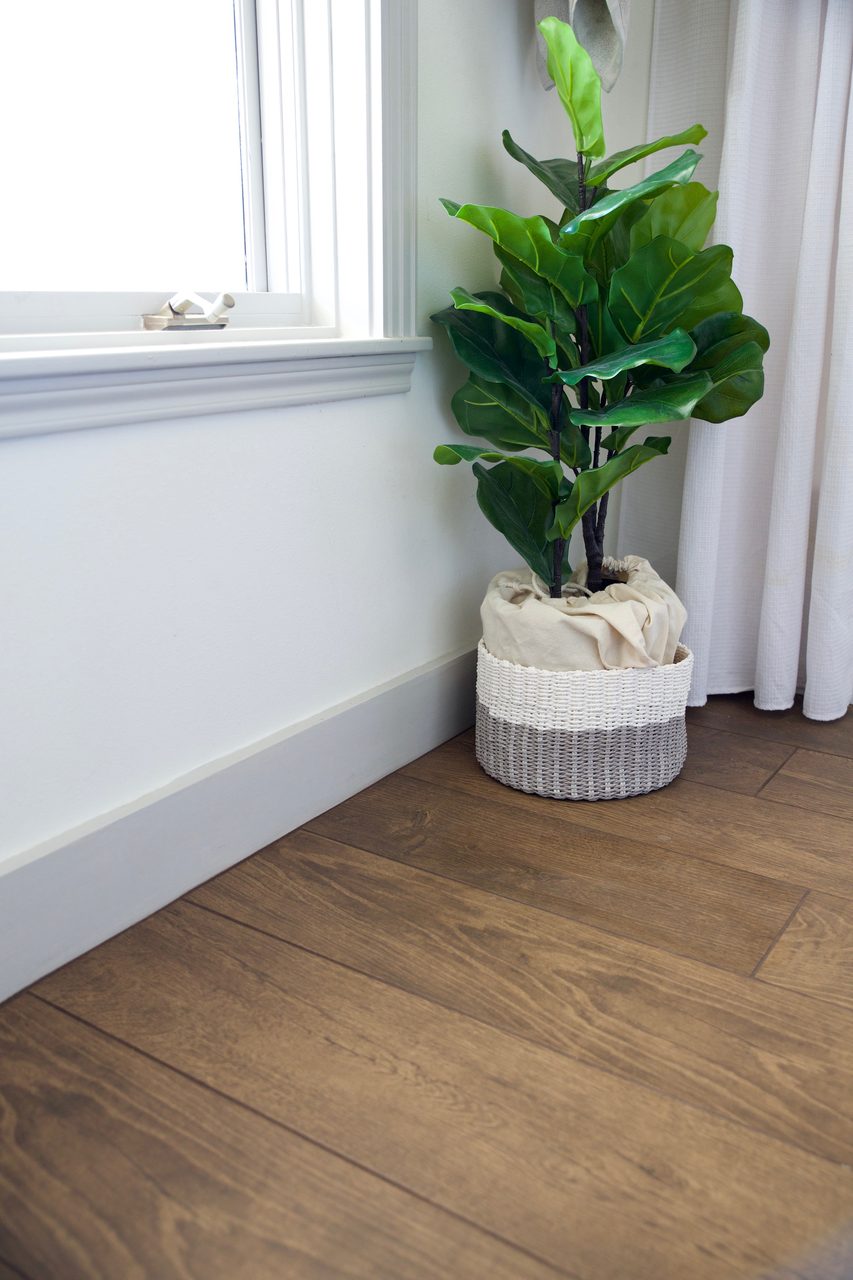
CSTD: It seems like tile applications are being used more now for outdoor applications than ever before. Why do you think this is?
DS: Landscape designers and consumers are recognizing the aesthetic reliability and performance advantages of utilizing tile in outdoors applications. By nature, porcelain tiles are less subject to scratching, staining, chipping and damaging effects caused by water infiltration, making them an excellent choice for open-air patios, driveways and swimming pool decks. In application, this scenario marries the in-demand aesthetic of nature-inspired materials with porcelain tile’s water-resistant composition to add tactile interest and lasting style to outdoor living spaces.
CSTD: When developing new product lines, what are some factors you consider to determine what is trending now?
DS: During the product development stages, we anticipate emerging design trends by paying close attention to the sizes, decors, mosaics and palettes that are most sought-after by designers.
Photo courtesy of Atlas Concorde USA
Landscape designers and consumers are recognizing the aesthetic, reliability and performance advantages of utilizing tile in outdoors applications, according to Davide Saguatti, marketing director, Atlas Concorde USA.
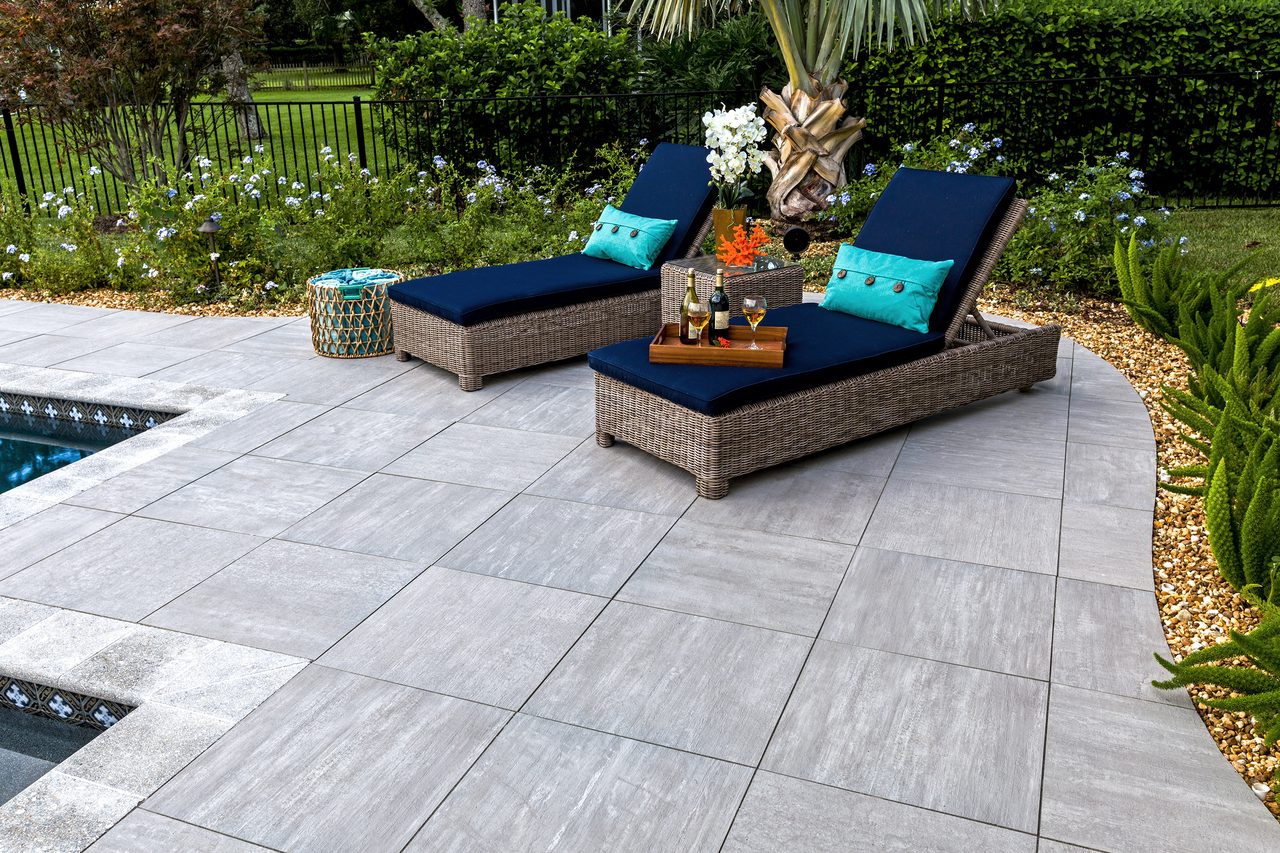
CSTD: Are there any particular tile trends you are currently seeing in the hospitality and commercial sectors?
DS: While residential markets are leaning into biophilic design, the commercial and hospitality segments are embracing more eclectic and playful elements when it comes to decors and accents. Designers are using larger tile sizes and even other innovative building products in order to make spaces feel truly unique.
CSTD: Overall, what do you see on the horizon in regards to tile trends in the near future?
DS: Tile will continue approaching different destinations of use, as we have seen happen with outdoor applications, as well as with bathroom and kitchen countertops.
Overall, tile’s traditional designation as a floor covering material is permanently shifting thanks to updated industry trainings offered to professionals, which increases awareness with designers and consumers about the wonderful design flexibility and performance advantages of this material.
Fall 2021

